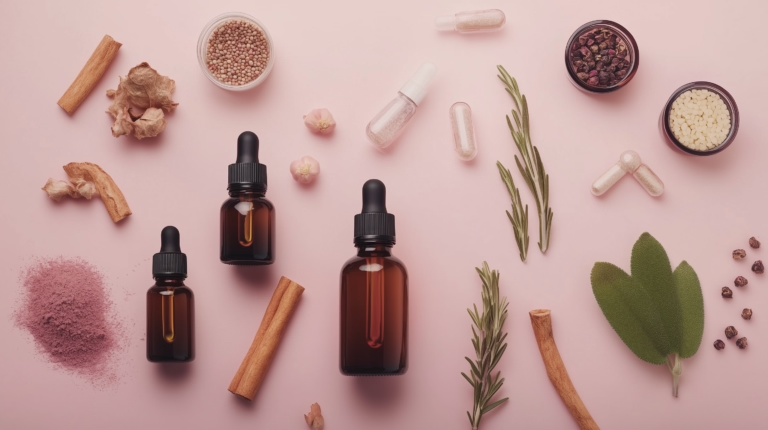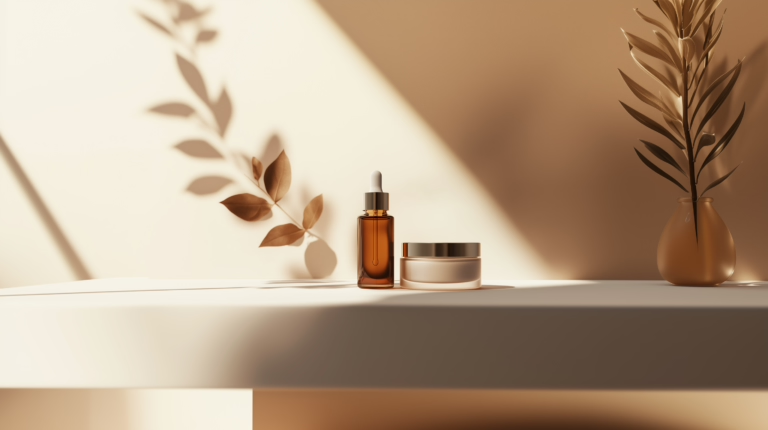8 Claims: ‘Steaming Pores’ Is the Best Way—Myth vs. Reality
Welcome to our deep dive into one of the most debated natural skincare techniques—steaming your pores. In this article, you’ll discover whether steaming is the miracle treatment many claim it to be or simply a myth surrounded by overhyped promises. As you read, you’ll gain practical insights into the process, scientific explanations behind its benefits, potential risks, and expert opinions to help you decide if this method is right for you. Whether you’re juggling a busy work schedule or trying to manage your skincare routine in a hectic lifestyle, this guide is tailored to help you make informed choices using natural, holistic approaches.
Our focus today is on providing a balanced, friendly, and easy-to-understand explanation, complete with actionable advice. We’ll walk you through what steaming actually involves, bust some myths, and compare it with other natural skincare methods. This article is written in a conversational second-person tone, ensuring you feel directly spoken to—just like a friend sharing tips on how to improve your skincare routine. So, if you’ve ever wondered whether those steamy treatments are worth your time, read on to get all the facts and decide for yourself!
Understanding Steaming Pores: What It Is & the Claims

Definition and Process
Steaming your pores is a skincare method where you use warm, moist air to help open up your pores. The idea is that the steam softens the skin, making it easier to remove dirt, oil, and impurities that may have clogged your pores. In practice, you typically heat water until it produces steam and then expose your face to this gentle mist—either by sitting over a bowl of steaming water or using a dedicated facial steamer.
The process is straightforward and accessible, even for beginners. You start by thoroughly cleansing your face to remove surface dirt. Next, you lean over the steaming water, keeping a safe distance to avoid burning yourself, and let the steam work its magic for a few minutes. This process is believed to increase blood circulation and promote a deeper cleansing of the skin. Many people find that this ritual, when done correctly, not only relaxes the mind but also enhances the overall appearance of the skin.
Common Claims and Myths
There are plenty of claims surrounding the benefits of steaming pores. Many enthusiasts say that it helps unclog pores, reduces acne, and even evens out skin tone. Social media and online beauty blogs are filled with testimonials declaring steaming as a miracle cure for various skin issues—from persistent blackheads to dull, tired-looking skin.
However, not all these claims are backed by solid evidence. While some benefits like improved circulation and temporary pore dilation are real, the notion that steaming can “detox” your skin or permanently eliminate skin issues is more myth than fact. There are also misconceptions that steaming alone can solve severe acne or other chronic skin conditions without additional skincare steps. It’s important to remember that while steaming might be beneficial as a part of your skincare routine, it’s not a one-stop solution. You need to pair it with proper cleansing, moisturizing, and sometimes even medical advice for optimal results.
The Science Behind Steaming: Fact vs. Fiction

Scientific Benefits and Mechanisms
Steaming your face does offer some scientific benefits that can improve your skin’s appearance, albeit temporarily. When you expose your skin to warm steam, the heat causes the pores to dilate, which can make it easier to remove accumulated sebum, dead skin cells, and other impurities. This process can lead to a temporary increase in blood circulation, which may help nourish the skin with oxygen and nutrients.
Moreover, the moisture from the steam hydrates the outer layers of your skin, potentially making it feel softer and more supple immediately after the treatment. The warm vapor also helps loosen any buildup in the pores, preparing your skin for subsequent cleansing or exfoliation steps. In essence, the science supports that steaming can be a useful pre-treatment in a broader skincare regimen. However, remember that these benefits are short-lived, and the skin quickly returns to its normal state without consistent care.
Potential Risks and Misconceptions
Despite its benefits, steaming isn’t without risks. Overdoing it can lead to skin irritation, dryness, or even exacerbate certain conditions like rosacea or eczema. The key is moderation. If the water is too hot or if you steam for too long, you may experience redness, swelling, or a burning sensation on your delicate skin. Moreover, some myths suggest that steaming can permanently unclog pores or “detoxify” the skin. In reality, your skin has its own natural detoxification system, and excessive steaming might disturb its balance, potentially leading to adverse effects.
It’s also a misconception that steaming can replace other essential steps in your skincare routine. Instead, it should be seen as a supplementary treatment—one that prepares your skin for better absorption of moisturizers or serums. For those with sensitive skin, even a mild steam session should be approached cautiously. The bottom line is that while steaming can offer short-term improvements in skin texture and appearance, it must be integrated carefully into your overall skincare strategy.
Real-life Experiences and Expert Opinions
User Testimonials and Case Studies
Many individuals have shared their personal experiences with steaming pores, and these real-life stories can be quite telling. You might have noticed that some users swear by steaming as a way to give their skin a quick refresh before a big event. For instance, one busy professional described how a short 5-minute steam session helped them feel relaxed after a stressful day, making their skin look a bit more radiant and ready for makeup application.
Other case studies suggest that incorporating steaming into a routine that includes proper cleansing and moisturizing can lead to a noticeable improvement in skin clarity. Although the results vary from person to person, these testimonials highlight the potential benefits when steaming is performed correctly and in moderation. Remember, your experience might differ depending on your skin type and overall skincare regimen. The key takeaway is to experiment carefully and see if the process adds value to your routine without causing any unwanted side effects.
Dermatologist Insights
Experts in skincare, including dermatologists, offer balanced opinions on steaming. They acknowledge that while steam can help open up pores and loosen impurities, it is not a standalone solution for skin problems. Many dermatologists recommend using steam as a preparatory step for more thorough cleansing rather than expecting it to resolve chronic skin issues on its own.
According to experts, the best results come when steaming is combined with other treatments like gentle cleansing, exfoliation, and appropriate moisturization. They caution against excessive steaming, which can strip the skin of its natural oils and lead to dryness or irritation. The consensus among professionals is that steaming should be seen as one component of a holistic skincare regimen. By understanding both the benefits and limitations, you can use steaming as a tool to enhance your natural glow while avoiding potential pitfalls.
How to Safely Steam Your Pores

Preparing Your Skin for Steaming
Before you begin your steam session, preparation is key. Start by thoroughly washing your face with a gentle cleanser to remove surface dirt, makeup, and oil. This step ensures that you’re not trapping any impurities under the steam. Next, gather all necessary supplies: a bowl or a dedicated facial steamer, a towel, and optionally, some essential oils (if your skin is not too sensitive) to add a soothing aroma.
Make sure your skin is clean and dry before you start. Pat your face gently with a clean towel and set up your steaming station in a comfortable, safe area where you can relax. Taking these preliminary steps will maximize the benefits of steaming while minimizing the risk of irritation.
Do’s and Don’ts During the Process
When you’re ready to steam, it’s important to follow some key guidelines to ensure safety and effectiveness:
- Do
- Keep a safe distance between your face and the steam source (around 12-18 inches) to prevent burns.
- Limit your steam session to about 5-10 minutes to avoid overexposure.
- Use a towel to trap the steam around your face, creating a mini tent for better effect.
- Don’t
- Use water that is too hot. The water should be warm enough to produce steam without causing discomfort.
- Overdo the steaming. More is not always better, and excessive steaming can lead to dryness or irritation.
- Forget to listen to your skin. If you feel any discomfort or notice redness, it’s best to cut the session short.
Following these practical tips can help you safely integrate steaming into your routine without risking your skin’s health.
Post-Steam Skincare Routine
After steaming, it’s crucial to follow up with the right skincare steps to lock in the benefits. First, rinse your face with lukewarm water to remove any impurities that have been loosened during the steam. Pat your skin dry gently with a clean towel.
Next, apply a lightweight, hydrating moisturizer to soothe your skin and prevent dryness. This is also a great time to use a serum or treatment suited to your skin concerns—whether it’s addressing acne, dullness, or fine lines. Remember, steaming opens up your pores, which means your skin is more receptive to active ingredients. Finishing off with a broad-spectrum sunscreen if you’re heading outdoors is also a smart move, as your skin might be more sensitive to UV rays immediately after a steam session.
Comparing Steaming with Other Natural Skincare Methods

Benefits of Steaming vs. Other Techniques
Steaming is often compared to other natural skincare methods such as cleansing, exfoliation, or facial masks. One of the key advantages of steaming is that it provides a gentle, non-invasive way to open up pores and prepare the skin for further treatment. Unlike harsh exfoliants that can strip your skin of its natural oils, steaming offers a more delicate approach that still effectively loosens dirt and oil.
Additionally, steaming has the dual benefit of promoting relaxation. The warm mist not only helps your skin but also offers a mini spa experience, easing stress after a long day. While other techniques like chemical exfoliants or mechanical scrubs have their place, steaming’s natural method of harnessing heat and moisture sets it apart, especially for those with sensitive or mildly congested skin.
When to Choose Alternative Methods
Despite its benefits, steaming isn’t always the best option for everyone or every skin condition. For instance, if you have very sensitive or acne-prone skin, too much steam can lead to irritation or worsen inflammation. In such cases, alternatives like gentle cleansing or using a mild exfoliant might be more suitable.
Moreover, if your skin concerns are more related to aging or pigmentation, other treatments like targeted serums or vitamin C formulations might offer more precise results. The choice between steaming and other methods should depend on your skin type, current condition, and the specific goals you have in mind. Experiment with different techniques and, if necessary, consult a skincare professional to tailor the routine that best meets your needs.
Debunking the Myths and Moving Forward
Steaming your pores can indeed be a valuable part of your skincare routine when done correctly and in moderation. Throughout this article, you’ve learned that while the process offers benefits such as improved circulation, temporary cleansing, and a soothing ritual, it is not a miracle cure that will permanently resolve deep-seated skin issues. The scientific evidence supports the idea of using steam as a preparatory step rather than a standalone treatment.
By integrating steaming into a comprehensive skincare regimen that includes proper cleansing, moisturizing, and sun protection, you can harness its benefits without falling prey to overhyped claims. Remember, every individual’s skin is unique—what works wonders for one person may not be the ideal solution for another. You are encouraged to experiment, listen to your skin, and adjust your routine based on your personal needs and experiences.
In summary, approach steaming with a balanced perspective: appreciate its potential benefits, be aware of its limitations, and always prioritize the overall health of your skin. We invite you to share your thoughts, ask questions, and explore related natural skincare techniques that might complement your journey to a healthier, more radiant complexion. After all, informed choices and a gentle, consistent routine are the keys to achieving lasting skincare results.







